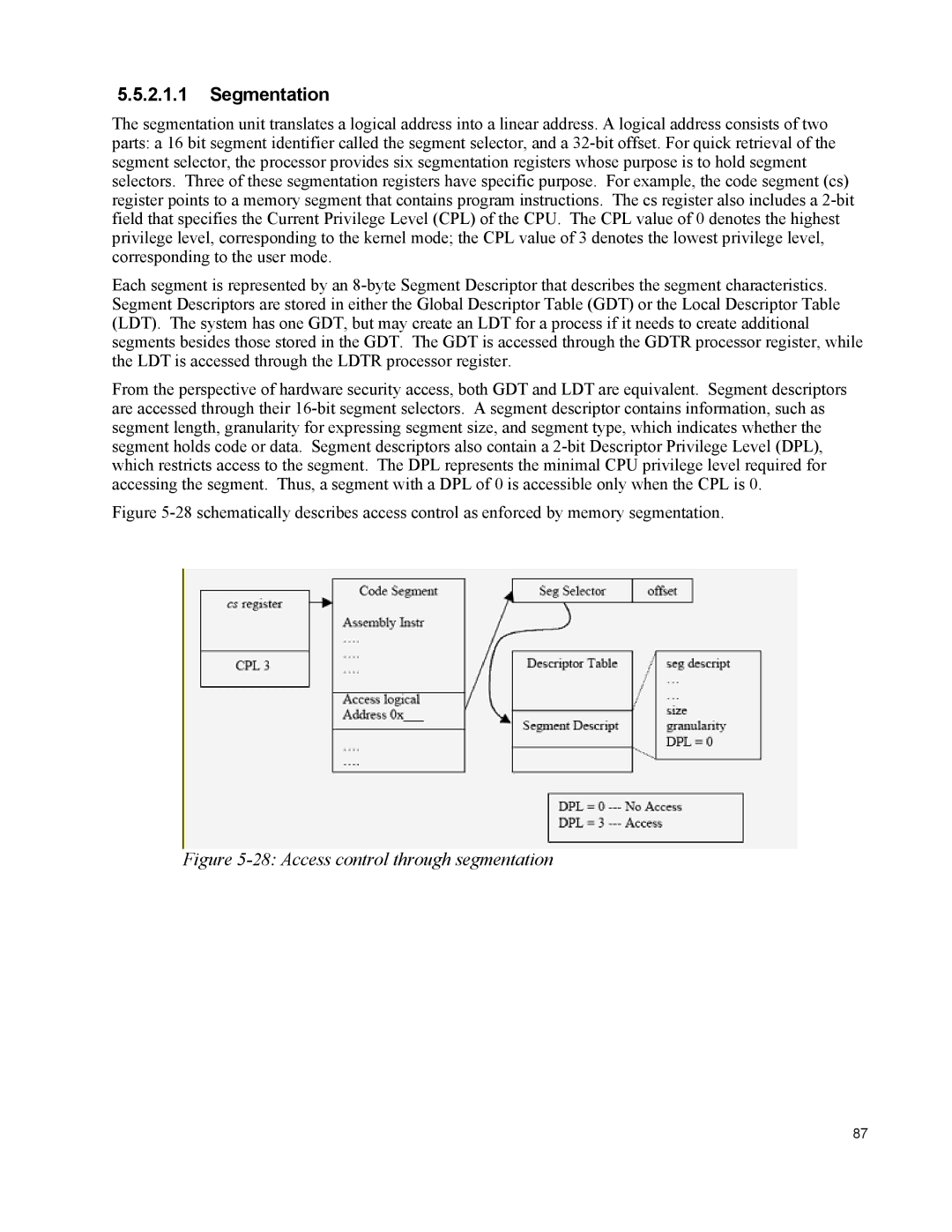
5.5.2.1.1Segmentation
The segmentation unit translates a logical address into a linear address. A logical address consists of two parts: a 16 bit segment identifier called the segment selector, and a
Each segment is represented by an
From the perspective of hardware security access, both GDT and LDT are equivalent. Segment descriptors are accessed through their
Figure 5-28 schematically describes access control as enforced by memory segmentation.
Figure 5-28: Access control through segmentation
87
